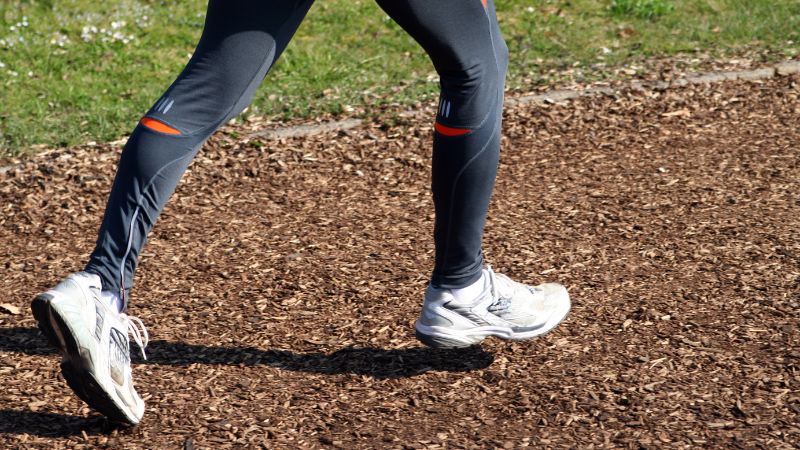Walking and running are both popular forms of exercise, offering a plethora of health and mental benefits. However, choosing the right form of exercise depends on your goals, physical condition, and personal preferences.
1 Benefits of Walking and Running
Physical activity is essential for everyone’s health. Among the popular physical activities, walking and running are favored by many as they are simple, easy to perform, and provide numerous health benefits.
Walking is considered a suitable form of exercise for all ages and fitness levels, especially beginners, the elderly, and those with joint problems. Walking offers health benefits such as:
- Weight control: Helps burn calories, supports weight loss or maintaining a healthy weight.
- Improved cardiovascular health: Enhances respiratory function and reduces the risk of cardiovascular diseases and high blood pressure.
- Increased strength: Promotes flexibility and strength in muscles, bones, and joints.
- Better mental health: Reduces stress, anxiety, and depression, leading to a more optimistic and positive mindset.
 Benefits of Walking and Running
Benefits of Walking and Running
Running, on the other hand, is a more intense form of exercise, suitable for those with good health and a history of regular physical activity. Running provides benefits such as:
- Reduced disease risk: Helps lower the risk of chronic diseases such as diabetes, cardiovascular issues, and cancer.
- Increased strength: Leads to stronger muscles, bones, and joints.
- Improved cardiovascular health: Enhances heart health and respiratory function.
- Stress reduction and improved memory: Running reduces stress, anxiety, and depression, while also improving memory and concentration.
2 Is Running Better Than Walking?
According to PGS.TS.BS. Nguyen Thi Kim Lien, Head of Rehabilitation Medicine at Vietnam-Germany Hospital, replacing walking with running can bring significant health benefits, especially for those aged 45 and above. Running burns more calories and is more effective for weight loss compared to walking.
Running is a full-body workout that requires flexibility and coordination between different body parts to maintain balance. Just 30 minutes of running each day can help with weight loss, improve cardiovascular health, boost mental well-being, and provide other benefits.
 Is Running Better Than Walking?
Is Running Better Than Walking?
However, this doesn’t mean that walking is less beneficial for your health. Both forms of exercise offer advantages, depending on your physical condition and goals.
For individuals over 65, it is recommended to maintain a daily physical activity of 30 minutes at a moderate intensity, which can include:
- Walking at a steady pace
- Brisk walking
- Hill walking
- Climbing stairs
If you have any health issues or chronic conditions, consult your doctor before starting any exercise program to ensure safety and effectiveness.
3 Tips for Effective Walking and Running
To ensure safety and maximize the benefits of your chosen exercise, keep in mind the following:
Warm-up and cool-down properly:
This is the most important step to prepare your muscles for exercise, increase flexibility, and reduce the risk of injuries. Spend 5-10 minutes warming up before your workout with joint rotations and light stretches. After your workout, cool down for another 5-10 minutes to help your muscles relax and recover.
Strengthen supporting muscles
Maintaining the strength of crucial muscles like the glutes, hamstrings, and core will improve your overall movement and reduce the risk of injuries. You can perform strength-building exercises for these muscle groups 2-3 times a week.
Gradually increase the intensity
Don’t rush into increasing your running speed or distance right away. Start with a comfortable pace and gradually build up over time. As a general rule, avoid increasing your distance or intensity by more than 10% each week.
 Tips for Effective Walking and Running
Tips for Effective Walking and Running
Adopt a suitable training method
You can start with a walk and then transition into a run, or alternate between walking and running for reasonable periods. Alternatively, try running for 5-10 seconds followed by a 1-minute walk, gradually increasing your speed and running duration.
Set realistic goals
Set exercise goals that align with your fitness level and abilities. Avoid setting overly ambitious goals that may lead to discouragement or injury.
Practice balance exercises
Balance exercises improve coordination and reduce the risk of falls and injuries. You can try yoga, pilates, or simply stand on one leg to improve your balance.
Both walking and running are simple and accessible forms of exercise that offer numerous health benefits. Dedicate some time each day to walking or running, and you’ll soon notice positive changes in your physical and mental well-being.
Source: Sức khỏe và Đời sống Newspaper



































